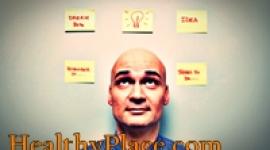Neurofeedback for Depression and ADHD
Neurofeedback has been used successfully to improve brain function after brain injury, stroke, and in ADHD and depression for more than 15 years.
Neurofeedback is a scientific technique for measuring and modifying brain performance that has moved into the clinical setting to provide fast and lasting relief.
 Neurofeedback is a special kind of biofeedback using an electro-encephalograph (EEG) to display the brain's functioning. This information is presented to the patient graphically in real time to allow the person to learn to control the brain more effectively. In the case of ADHD, the person has limited ability to concentrate. On an EEG, the brain waves are similar to those of a normal person who is daydreaming. To train such a person, a variation of a computer game is created, where the motion of an object, such as an airplane, is controlled by brain waves. The patient sits in front a monitor, "flying" the plane to avoid obstacles and the ground. The patient is learning to control the brain waves that provide concentration while having fun. The result is that the patient learns to concentrate the attention where it will do the most good.
Neurofeedback is a special kind of biofeedback using an electro-encephalograph (EEG) to display the brain's functioning. This information is presented to the patient graphically in real time to allow the person to learn to control the brain more effectively. In the case of ADHD, the person has limited ability to concentrate. On an EEG, the brain waves are similar to those of a normal person who is daydreaming. To train such a person, a variation of a computer game is created, where the motion of an object, such as an airplane, is controlled by brain waves. The patient sits in front a monitor, "flying" the plane to avoid obstacles and the ground. The patient is learning to control the brain waves that provide concentration while having fun. The result is that the patient learns to concentrate the attention where it will do the most good.
In the case of depression, there are characteristic brain wave patterns. With neurofeedback, those patterns can be replaced by ones characteristic of normal mental behavior without drugs and without talk therapy.
About the author: Cory Hammond is the immediate Past President of the International Society for Neuronal Regulation (ISNR), the Past President and a Fellow of the American Society of Clinical Hypnosis, and the past Chair of the Board of Trustees of the ASCH Education and Research Foundation. He is a full Professor of Physical Medicine & Rehabilitation and a Psychologist at the University of Utah School of Medicine. Dr. Hammond has published 57 journal articles or reviews, 40 chapters, numerous sections in books, and 8 books, including a leading textbook, Handbook of Hypnotic Suggestions & Metaphors.
For the most comprehensive information about Depression, visit our Depression Community Center here, at HealthyPlace.com.
next: Nine Symptoms of Depression
~ adhd library articles
~ all add/adhd articles
APA Reference
Staff, H.
(2004, March 31). Neurofeedback for Depression and ADHD, HealthyPlace. Retrieved
on 2025, December 8 from https://www.healthyplace.com/adhd/articles/neurofeedback-for-depression-and-adhd

